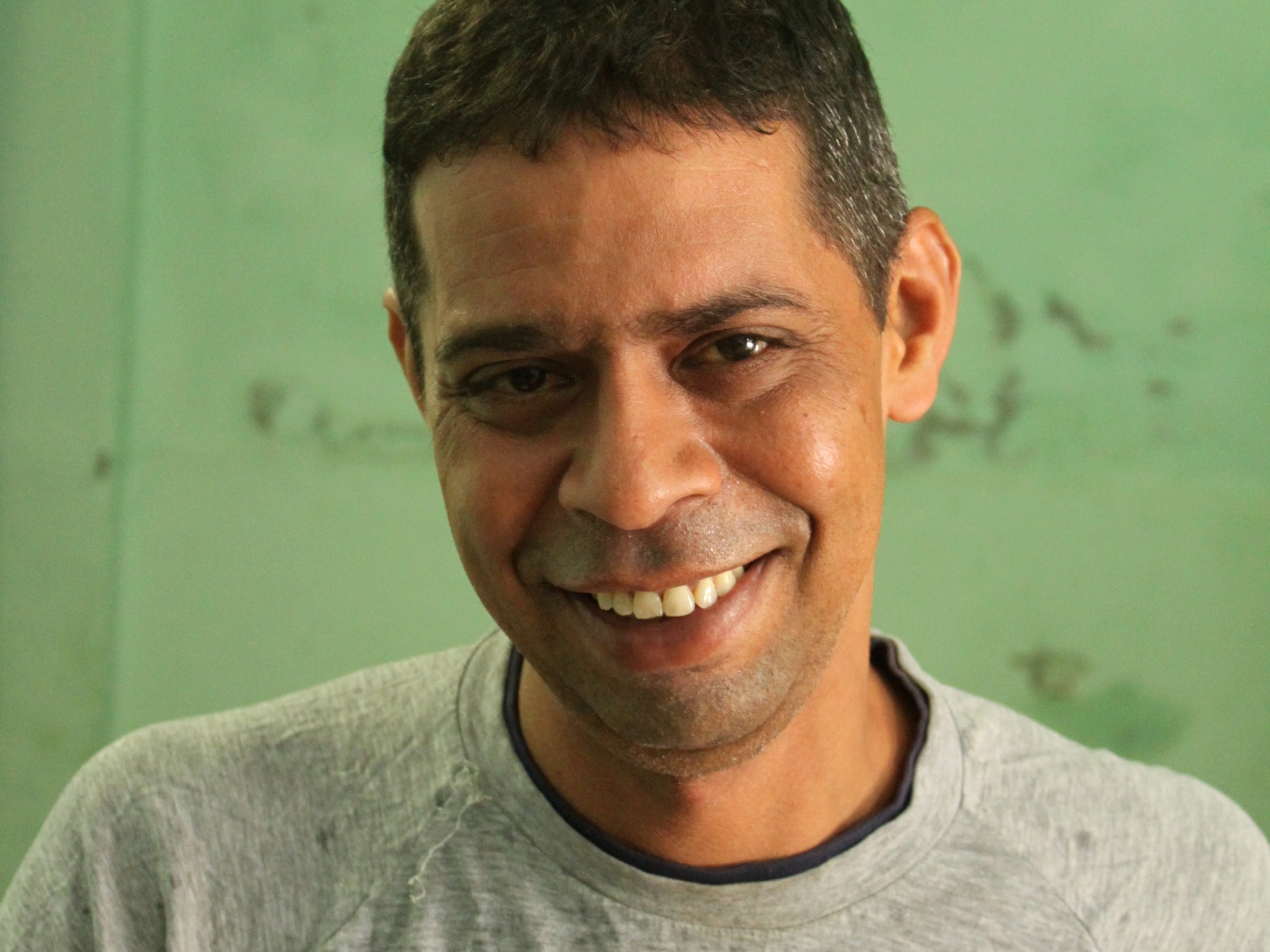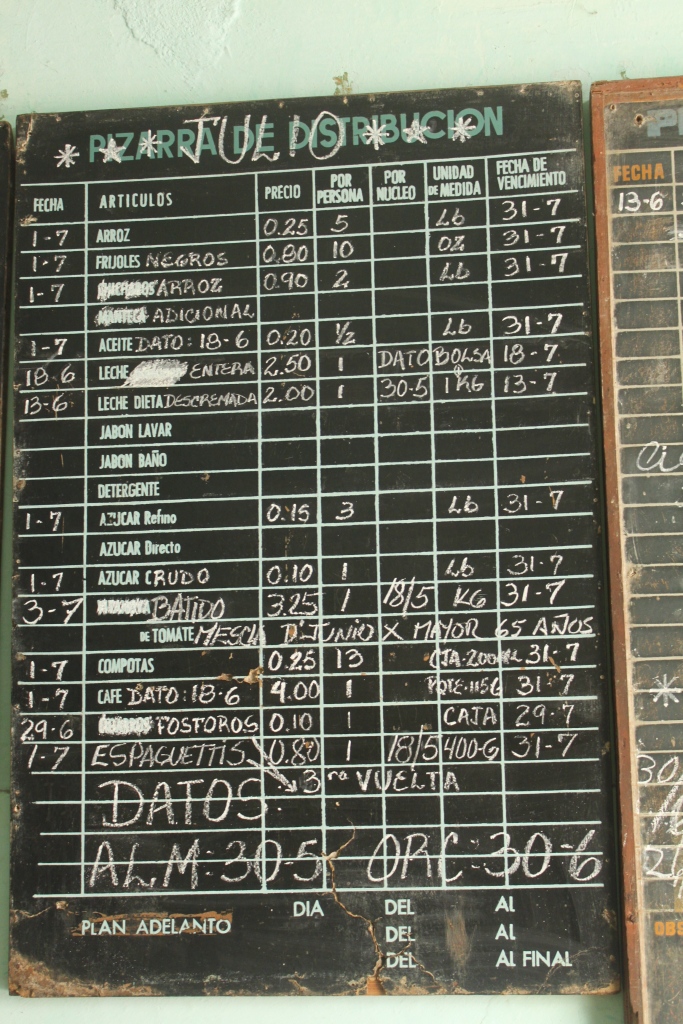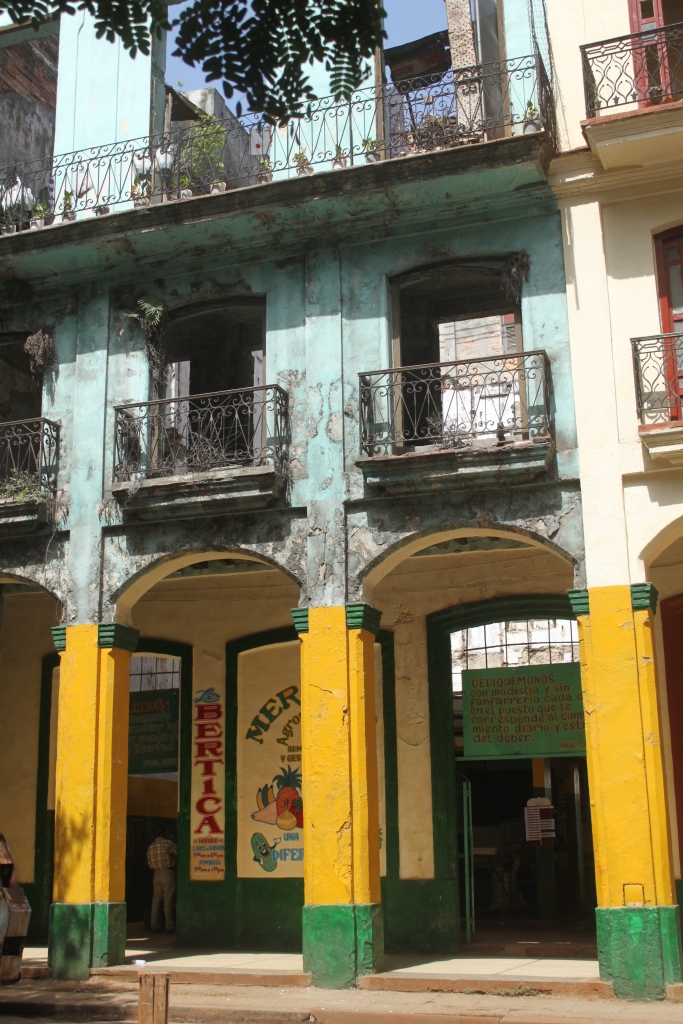I peek around the corner of the grocery store. Well, I guess ‘store’ is a misnomer – distribution point, maybe? I am shy at first because I am wary of being an obnoxious foreigner, treating Havana as an open-air museum full of entertaining quirks that actually make up Cubans’ reality. But the clerk waves me closer, smiling. “Have you never seen a carnet [rationing card]? I would leave you one if I find a spare one.”
He doesn’t, but it doesn’t matter. Instead, he explains to me the complex chart covering the wall of the threadbare room. On it are the amounts of state-subsidized basic food products that each Cuban citizen is entitled to at nominal prices. They vary from month to month according to supply, which is why the board needs constant updating.
Available this month: rice, beans, oil, milk, sugar, tomato puree, fruit compote, coffee, matches and spaghetti. At around 13 Cuban national pesos, corresponding to ca. 0.70 $. Granted, 3.5 kg of rice, 400 g spaghetti and 400g of beans probably won’t suffice for a month’s worth of eating, but I guess it’s a start.
In addition, there are state-owned farmers’ markets where fruit, vegetables and other agricultural goods are available for purchase. Again, prices are in Cuban national pesos (1$ = 25 national pesos; average income is around 500 national pesos). The clerk at the distribution store explained that originally, fruit and vegetables were included in the subsidized food basket, but that this policy became too expensive for the government, if I understood correctly.

Then, there are also supermercados, grocery stores, though their offers differ significantly depending on where you are located and who they cater to. Some have erratic offers of goods, others quote exorbitant prices on par with US prices. Look at the following examples, keeping in mind that average income is 20 CUC:

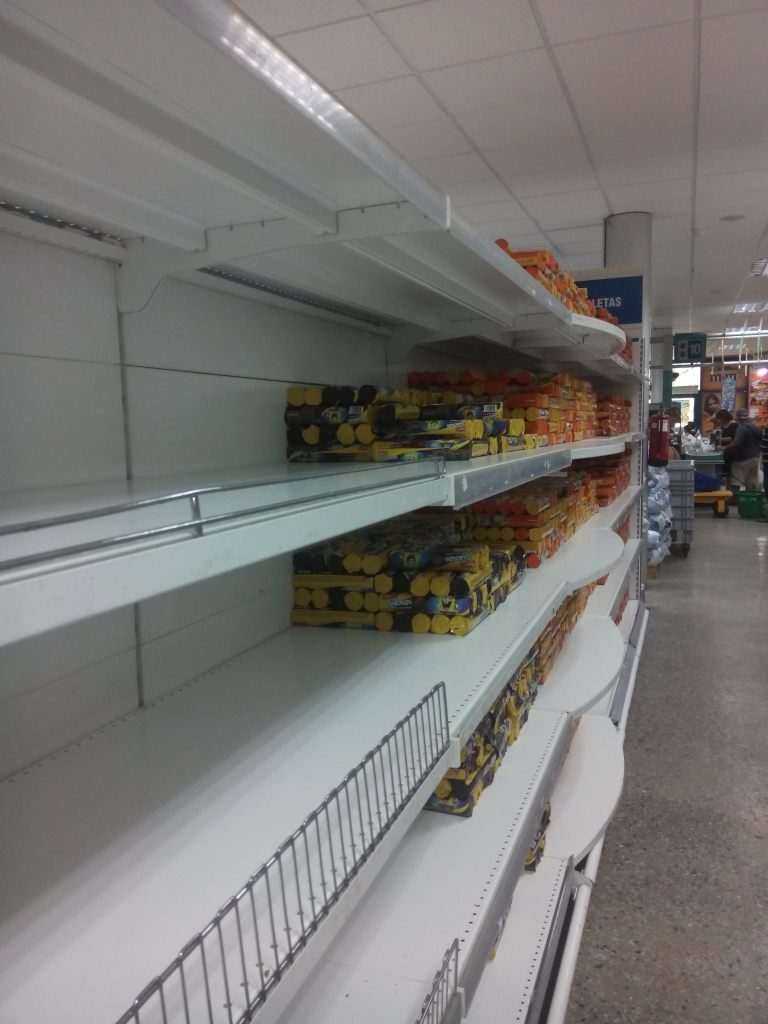
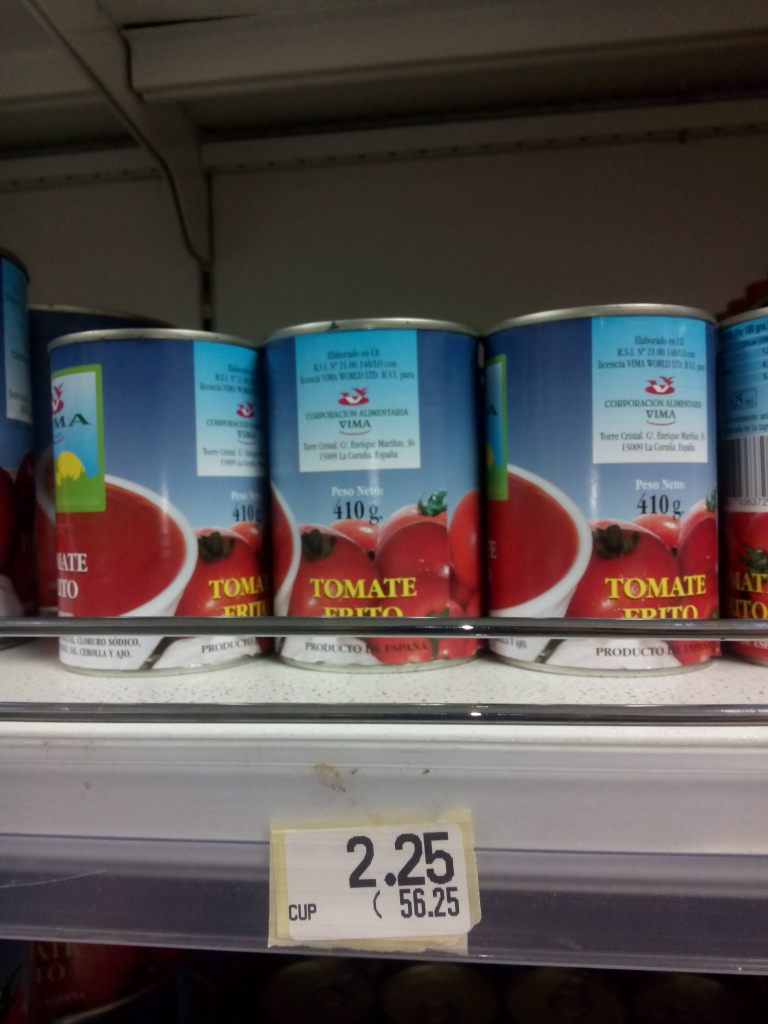

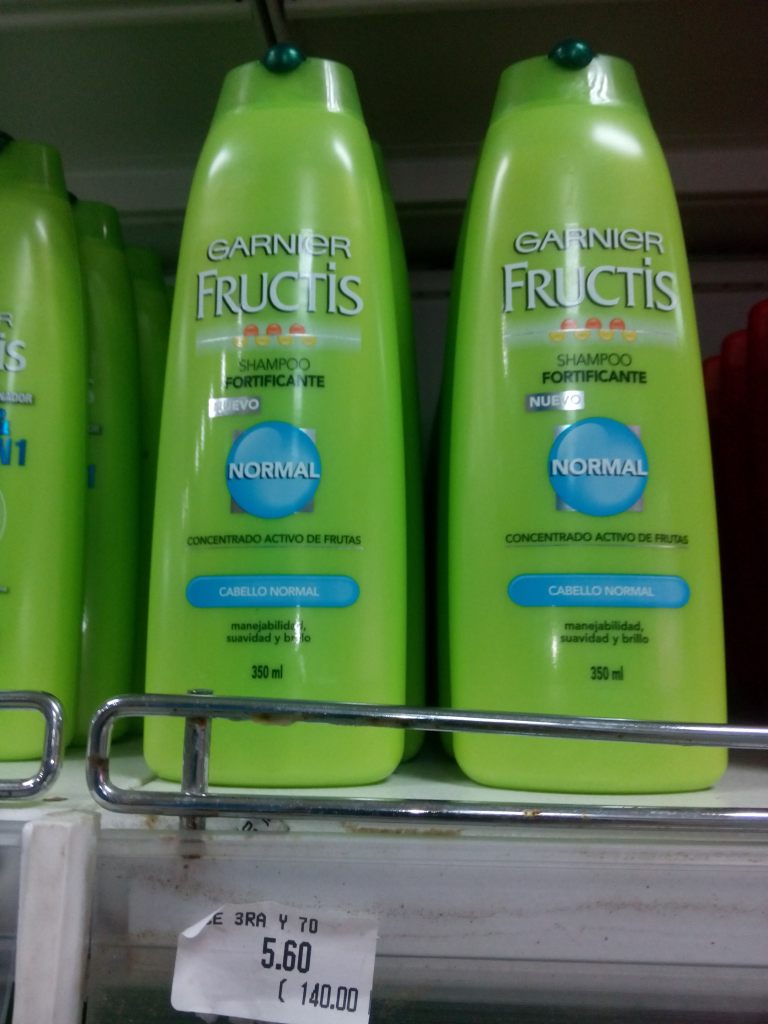
Wandering through the aisles of the supermercado, strolling through inner-city streets in Havana and witnessing the food offers in our hotel and the conference center, I started wondering about the current state of affairs regarding food security and food sovereignty in Cuba. How do people really feed themselves? How far do the rations go in feeding the people? Is the government keeping its promise to provide for the basic nutritional needs of its population?
A new WFP country program, to be implemented between 2015 and 2018, gives the answer to some of the questions I have in its rationale. Excerpts follow (emphasis added):
- Cuba imports 70 to 80 percent of its food requirements, paying high global food prices and transport costs. Most imports are for social protection programmes. Increasing domestic food production – particularly of beans, a main staple and a critical source of protein – is a government priority to substitute imports and improve food security.
Between 2000 and 2012, food imports increased by 240%, mainly due to food price increases, since quantities did not change significantly.
- The subsidized monthly food basket used to cover 50 percent of household needs now covers only 38 percent because of Cuba’s strong dependence on food imports, and high international market prices leading to high import costs, which are also impacted by the embargo. Complementary programmes that covered another 20 percent of household food needs have been modified.
- Households meet more than 60 percent of their food needs from their own production and non-subsidized food markets, which are characterized by high prices and irregular supplies.
Cubans spend 60 to 75 percent of their incomes on food.
- Cuba’s comprehensive approach to mother-and-child health has ensured low rates of morbidity, mortality and malnutrition; rates of moderate and severe underweight in children under 5 and of stunting are less than 5 percent. However, dietary diversity is poor and has declined with changes in the subsidized food basket, including reduced provision of pulses and eggs. In eastern provinces, approximately 44 percent of preschool children consume very few or no vegetables because of limited access and cultural issues, which require behavioural change; and the prevalence of anaemia, mainly mild, is 39.5 percent in children aged 6–23 months and 17 percent in children aged 24–59 months.
- Cuba is updating its economic model and social programmes, including by decentralizing decision-making on food resources and adopting a new agricultural management model focused on reducing food imports. This model increases the role of provincial and municipal authorities in the economic and financial management of production systems, and encourages food self-sufficiency programmes.
- Between 1994 and 2008, the proportion of agricultural land under State control and management declined from 85 to 23 percent through the conversion of State farms into cooperatives, with farmers usufructing land and benefiting directly from their production. From 2008 to 2013, more than 184,000 people – many with limited farming experience – received 1.6 million ha of farmland. Lack of technical capacity, limited access to inputs and poor training resulted in low productivity.
A remedy to this problem of low productivity has been, for example, the Programa de Apoyo Local a la Modernización del sector Agropecuario en Cuba (Local Support Program for the Modernization of the Cuban Agricultural Sector) supported by the EU and UNDP. Under this program, 13,200 farmers were provided with farming tools and machines, as well as training on modern and sustainable farming, including training on cooperatives; and business management and planning. The project has shown first impacts: the enrolled cooperatives have been able to increase production of basic food products, such as milk, grains, fruits and tubers. In 2011 alone, this increased production replaced more than US $15 million worth of food imports.
The new US$ 18 million WFP program aims to further build on these advances by supporting food security and nutrition-related social protection programmes (e.g., adding bean rations to school feeding programs and distributing micronutrient powders to fight anemia); strengthen links between social protection systems and agricultural value chains (i.e. supporting local bean production and subsequently linking local procurement from smallholder farmers and cooperatives to food-based social protection programmes targeting preschools, primary schools, maternity homes and the elderly); and strengthening community resilience and disaster risk management capacities at the local level.
What all these fancy terms boil down to, finally, is this: Cuba needs to get better at producing food on its own territory, in particular beans, the main source of protein for its population. Here, however, alternative agricultural policy may get into the way.
I recall a session at our conference where producers could share experiences about sustainable land management. After many encouraging examples, one farmer spoke up and lead the discussion in a different direction. He came from Pinar del Rio, the island’s top tobacco-growing area. Here, the usufruct – the right to use land for agricultural activities – is tied to meeting a government-issued quota of tobacco production. The farmer in question got so emotional he almost wept:
Why are we not allowed to plant something less demanding that can also feed our families? Why won’t the government let us at least intercrop short-cycle plants with multiple harvests a year? Why, if we know we need to produce more beans, can’t we plant beans?
This question will be the topic of a future in-depth blog post.
